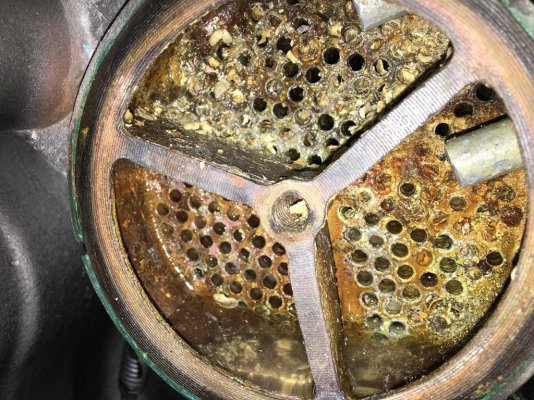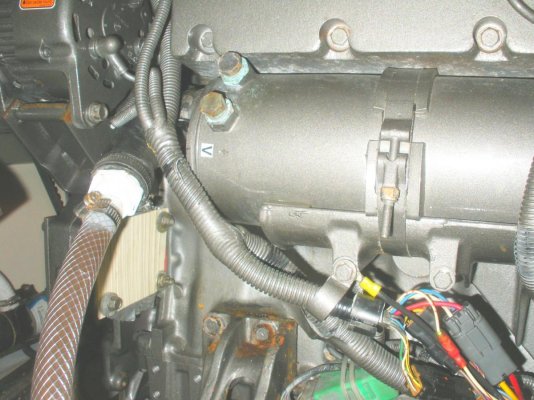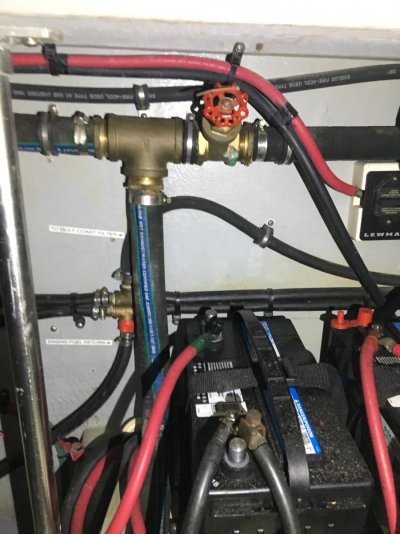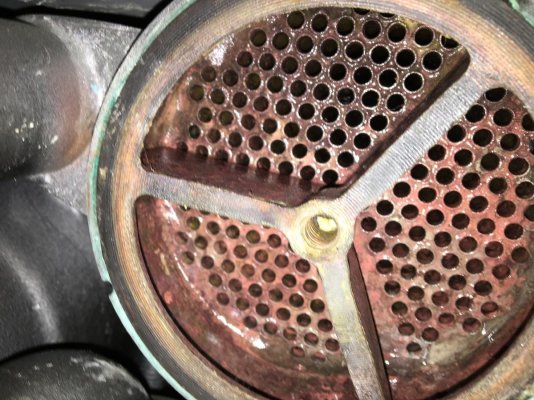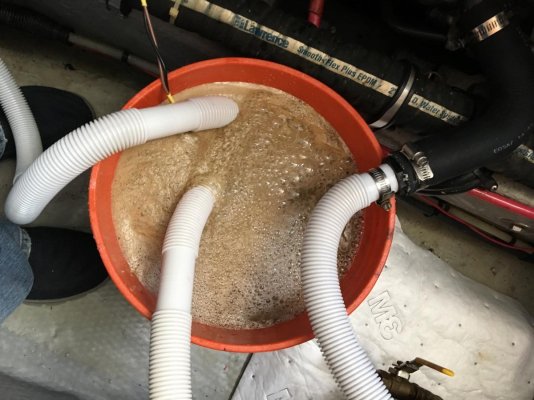Djoub
Veteran Member
I’m new to diesels and new to boating year round in warm Florida water. I have a few questions on engine system flushing. I have a (new to me) 1998 Mainship 350 trawler with a 2008 Yanmar 6YLP-STC 370 hp engine. I was replacing the raw water impeller and decided to pull off the cover to the intercooler(?) and noticed a lot of debris; barnacle shells, rubber, even some old zinc pieces. Looks pretty clogged up. I have been reading a lot and watching YouTube but still not sure how to do this.
Here are a few questions:
Do I flush before the impeller or after? Please don’t tell me I need to remove the new impeller. I’ve seen BB (Barnacle Buster) use a funnel over the sea strainer. I don’t have a sea strainer for the engine, just a grate over the hull intake. Do I need to install one?
Some videos show it going into the strainer and thru the engine components and letting the solution sit in the system for a couple of hours then flush it out with sea water. Also have seen videos with a closed loop flush which I’m guessing is more effective. I can figure out a way to get it into the intake hose but where do I close the output of the loop on the exhaust or hot side or before it goes into the muffler?
Haven’t used the boat much since purchased earlier this year because I have been learning and retrofitting much of the boat. Every time I learn and fix something I uncover another issue. Yes I know, it’s a boat. Thanks in advance.
Here are a few questions:
Do I flush before the impeller or after? Please don’t tell me I need to remove the new impeller. I’ve seen BB (Barnacle Buster) use a funnel over the sea strainer. I don’t have a sea strainer for the engine, just a grate over the hull intake. Do I need to install one?
Some videos show it going into the strainer and thru the engine components and letting the solution sit in the system for a couple of hours then flush it out with sea water. Also have seen videos with a closed loop flush which I’m guessing is more effective. I can figure out a way to get it into the intake hose but where do I close the output of the loop on the exhaust or hot side or before it goes into the muffler?
Haven’t used the boat much since purchased earlier this year because I have been learning and retrofitting much of the boat. Every time I learn and fix something I uncover another issue. Yes I know, it’s a boat. Thanks in advance.

